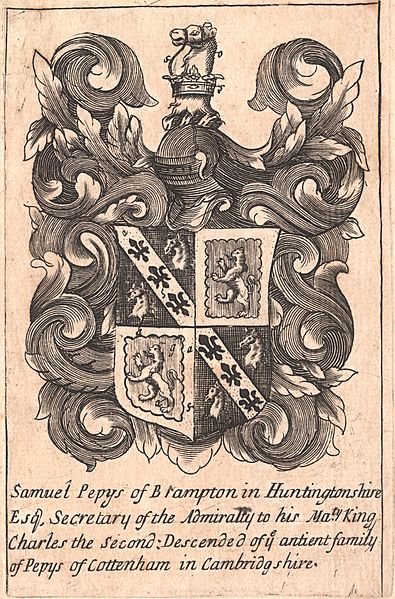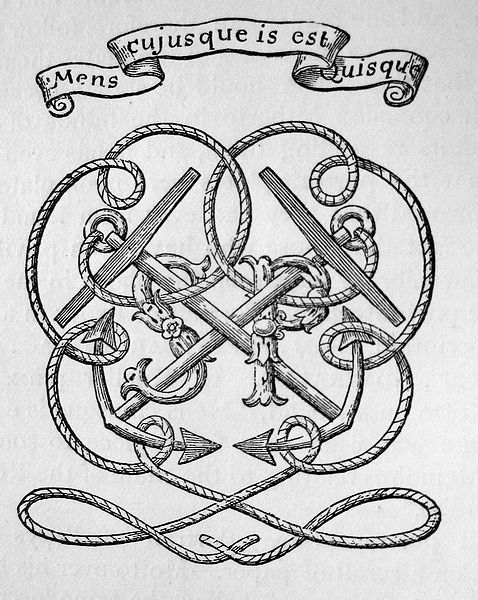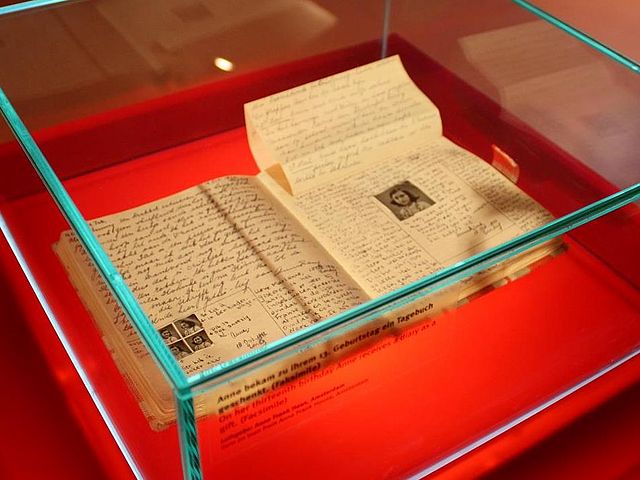Samuel Pepys was an English diarist and naval administrator. He served as administrator of the Royal Navy and Member of Parliament, but is most remembered today for the diary he kept for almost a decade. Though he had no maritime experience, Pepys rose to be the Chief Secretary to the Admiralty under both King Charles II and King James II through patronage, diligence, and his talent for administration. His influence and reforms at the Admiralty were important in the early professionalisation of the Royal Navy.
Portrait by John Hayls, 1666
Bookplate, c. 1680–1690, with arms of Samuel Pepys: Quarterly 1st & 4th: Sable, on a bend or between two nag's heads erased argent three fleurs-de-lis of the field (Pepys); 2nd & 3rd: Gules, a lion rampant within a bordure engrailed or (Talbot). Samuel Pepys was descended from John Pepys who married Elizabeth Talbot, the heiress of Cottenham in Cambridgeshire. The Pepys arms are borne by the Pepys family, Earls of Cottenham.
Elisabeth de St Michel, Pepys' wife. Stipple engraving by James Thomson, after a 1666 painting (now destroyed) by John Hayls.
Samuel Pepys' bookplate. The motto reads Mens cujusque is est Quisque – "Mind Makes the Man".
A diary is a written or audiovisual memorabilic record, with discrete entries arranged by date reporting on what has happened over the course of a day or other period. Diaries have traditionally been handwritten but are now also often digital. A personal diary may include a person's experiences, thoughts, and/or feelings, excluding comments on current events outside the writer's direct experience. Someone who keeps a diary is known as a diarist. Diaries undertaken for institutional purposes play a role in many aspects of human civilization, including government records, business ledgers, and military records. In British English, the word may also denote a preprinted journal format.
A facsimile of the original diary of Anne Frank on display in Berlin
Samuel Pepys
Faustina Kowalska






